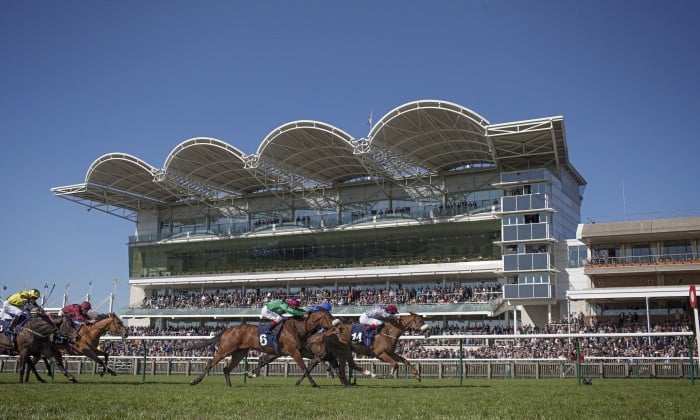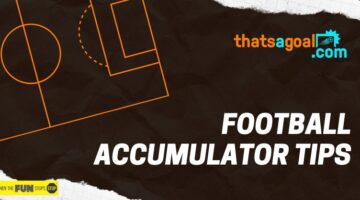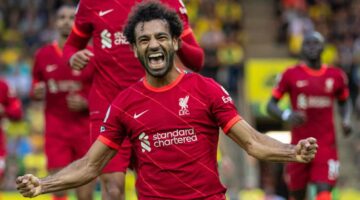Horse Racing Terms & Abbreviations: What does horse racing terminology mean?

Horse racing is arguably the biggest sport in the UK when it comes to betting, with racing every day and major events such as Cheltenham and the Grand National welcoming wagers totalling the millions.
But if you’re not well versed in the language of horse racing betting, then you may find it a struggle to understand the market and make the most of tips and odds.
We understand that all the jargon can be a little daunting for those only just entering the horse racing world. That’s why we’ve compiled this list of horse racing terms and abbreviations.
Horse Racing Terms
All-Weather
This is an artificial track that can be used across all weather, with the surface remaining relatively consistent no matter what the conditions.
Antepost
This is a type of wager placed on a future race.
Bridle
This is a piece of equipment that is placed over a horse’s head in order to control it around the course.
Broke Down
Essentially a similar term to what you’d use to describe a car. This simply means a horse has suffered an injury during a race.
Brought Down
This means that a horse was brought down by another horse during a race. This is usually due to a horse falling and bringing further horses down with it.
Blinkers
Blinkers are a piece of headwear which alters the peripheral vision of a horse so it only looks forward. This aims to focus the horse on the race and course in front of it rather than the distractions around it.
Boxed In
Boxed in is a term used to describe a horse that has been trapped by other horses in a race and is unable to pull out and begin to overtake.
Back Straight
The back Straight is the strip of the racecourse on the opposite side to the grandstand.
Classic
A Classic is one of five races in the UK widely considered the most prestigious. The Classics are:
- 2,000 Guineas
- 1,000 Guineas
- The Oaks
- The Derby
- St Leger
Distance
The distance in which a horse has won a race.
Dam
The mother of a horse.
Damsire
A horse’s maternal grandfather.
Each-way
An each way bet is a wager that involves half your stake bet on the horse winning the race and half on it to place.
Flat Racing
Racing without fences or jumps.
Furlong
A furlong is a way in which a racecourse is measured. It represents 220 yards.
Favourite
The horse that is most likely to win the race according to the bookmakers.
Filly
A female horse that is four-years-old or younger.
Gelding
A gelding is a horse that has had castration surgery.
Going
The Going is a term used to describe the condition of a track’s surface.
Handicap
Horses are given weights dependent on their rating in a race. This is called a handicap.
Juvenile
A Juvenile is horse aged two.
Maiden
A horse that has yet to win a race is known as a maiden.
Mare
A female that is over the age of five.
Non-Runner
A horse that was originally set to take part in a race but has since pulled out.
National Hunt
A type of racing that involved fences, ditches and jumps. Cheltenham and the Grand National are the most popular of the National Hunt races.
Stallion
A breeding horse on the male side is called a stallion.
Starting Price (SP)
The price of a horse when it is at the start line. Commonly referred to as SP.
Sire
A horse’s father.
Trainer
A trainer is the person who has been training the horse and generally looking after it.
Racecard Abbreviations
As well as terms you’ll find across horse racing tips and articles, you’ll also find a number of abbreviations on racecards.
Below you’ll find some of the more commonly used abbreviations found.
Horse
These are all used to describe a horse.
- C: The horse has previously won on the same course.
- D: The horse has previously won over the same distance.
- CD: A horse that has won on the same course and the same distance.
- BF: The horse has previously been a favourite in a race but lost.
- OR: The official rating of a horse according to the BHA.
Form
These terms are all used to represent a horse’s form.
- 1-9: Previous finishing positions of a horse.
- 0: Horse finished outside the top nine.
- – : Represents the turning of a year.
- / : A separation of horse racing seasons.
- P: The horse pulled up in a race and didn’t finish.
- R: The horse refused to race or take a fence.
- F: The horse fell during a race.
- BD: The horse was brought down in a race.
- U: The rider of the horse became unseated during the race.
Going
These represent the conditions of the racecourse in terms of the race track.
- f or fm: Firm
- g or gd: Good
- hd: Hard
- hy or hvy: Heavy
- s or sft: Soft
- stand: Standard AW
Horse’s Headgear
This is used to tell a punter whether the horse was wearing a particular type of headgear.
- h: Hood
- b: Blinkers
- p: Cheekpieces
- v: Visor
- t: Tongue-tie
- e: Eye hood
- Ht: Hood and tongue-tie.
- e/c: Eyecover
- e/s: Eyeshield
Type Of Race
You’ll also find a series of initials to represent the type of race.
- AW: All Weather
- Ch: Chase
- Cls: Class
- Div: Divisional
- Gd: Grade 1, 2 or 3 in jump racing
- Gp: Group 1, 2 or 3 in flat racing
- Hcap: Handicap
- H: Hurdle
- List: Listed
- Mdn: Maiden
- NHF: National Hunt Flat
- Nov: Novice
Relevant news

How to use the Betfred Goals Galore, Goals Galore Bonus and Goals Galore Extra Coupons
Betfred is one of the UK’s leading online and brick-and-mortar sportsbooks and their Goals Galore…

Football Accumulator Bets – Tips & Advice for Betting on a Football Accumulator
Leagues to bet on How to bet on an accumulator Types of football accumulator How…

Best Bookmakers for Football Accumulator Bets
Paddy Power Betfred Bet Victor bet365 Coral You can back our football accumulator tips with…

Best Accumulator Betting Sites for Acca Bonuses, Cash Out, Free Bets and Acca Freeze
Betting on football accumulators is one of the most popular ways that people enjoy a…

QuinnBet Free Bet For 0-0 Draws – Sign Up Now for the No Goals No Worries Offer
Nobody likes a 0-0 draw. There’s no such thing as a -0 thriller, and let’s…

Kwiff £20 Surprise Bet – Bettings Most Exciting Welcome Offer?
Kwiff has become a hugely popular betting site over the last few years and it…

How to use the Betfred Goals Galore, Goals Galore Bonus and Goals Galore Extra Coupons
Betfred is one of the UK’s leading online and brick-and-mortar sportsbooks and their Goals Galore…

Football Accumulator Bets – Tips & Advice for Betting on a Football Accumulator
Leagues to bet on How to bet on an accumulator Types of football accumulator How…

Best Bookmakers for Football Accumulator Bets
Paddy Power Betfred Bet Victor bet365 Coral You can back our football accumulator tips with…

Best Accumulator Betting Sites for Acca Bonuses, Cash Out, Free Bets and Acca Freeze
Betting on football accumulators is one of the most popular ways that people enjoy a…

QuinnBet Free Bet For 0-0 Draws – Sign Up Now for the No Goals No Worries Offer
Nobody likes a 0-0 draw. There’s no such thing as a -0 thriller, and let’s…

Kwiff £20 Surprise Bet – Bettings Most Exciting Welcome Offer?
Kwiff has become a hugely popular betting site over the last few years and it…

